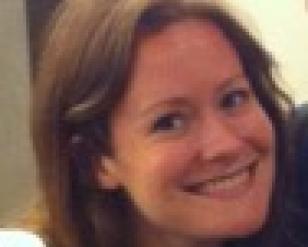In my first semester teaching at Sonoma State, I had what turned out to be the great fortune of becoming involved in the School of Science and Technology's Freshman Year Experience, A Watershed Year. This interdisciplinary course incorporating biology, mathematics, and critical thinking spans both semesters of the freshman year and provides students with 12 units of General Education credit. It evolved out of a CCE program, SWEEP. In this program, students investigate environmental issues related to our local Russian River watershed via in- and out-of-class activities. The class appeals to incoming students who are leaning towards a major in a science-related field, or who are simply passionate about the health of their surrounding environment.
One of the most impactful aspects of this course is made possible through the service-learning partnership we have with Claudia Luke and Chris Halle of the SSU Center for Environmental Inquiry, as well as with Brittany Heck Jensen of Goldridge Resource Conservation District. These community partners first meet our students during a field trip early in fall semester. We take the students to Fairfield Osborn Preserve, where Claudia and Chris introduce them to the university-owned preserves, and then we migrate towards the Camp Meeker site on Dutch Bill Creek, where Brittany shows the students evidence of restoration efforts along the creek. Our students hear from these partners again later in fall semester during an on-campus seminar. It is during this time that Claudia, Chris, and Brittany present the students with some of their agencies' management challenges and enlist the students' help. By the beginning of spring semester, the students have drafted an initial plan to investigate one of the management issues, refined their proposal based on instructor and community partner feedback, and formed teams to tackle the projects.
We take a full day at each site during spring semester in order for the students to collect data; they return to campus to analyze their results. Within a week or two the students have polished oral presentations that they deliver directly to the community partners. The significance of reporting to a community partner "client" rather than simply to their course instructor increases the quality of our students' final products and encourages the students to become experts in their respective project areas. The experiences presenting to Claudia, Chris, and Brittany build students' confidence in their ability to participate in scientific inquiry; soon after these projects, the students design their own research plan to execute and present at the SSU Science Symposium in May.
On end-of-year course evaluations, our students consistently and unequivocally assert that collaborating with community partners was one of the most valuable and memorable parts of the course. Many of our students continue on in service-learning-related projects as a result of their positive experiences in A Watershed Year.







